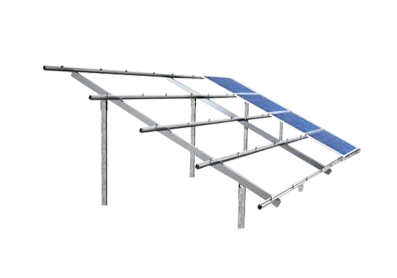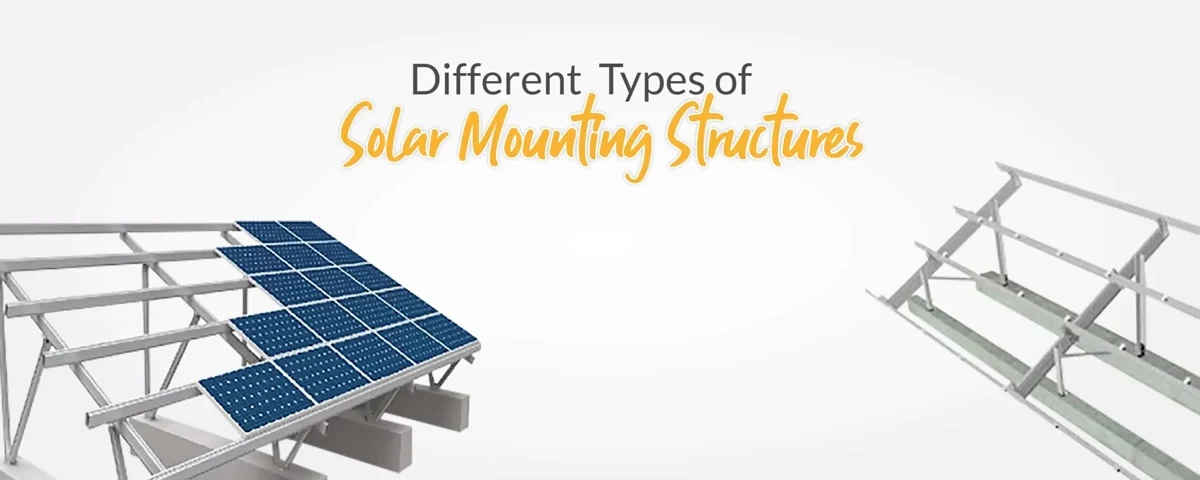
Unveiling Strengths in Modern Solar Mounting for Enhanced Stability
06/03/2024
Different Types of Solar Mounting Structures
In the dynamic world of renewable energy, solar power stands out as a shining beacon of sustainability. The efficiency of solar panels not only depends on the quality of photovoltaic cells but also on the solar mounting structures that support them. This comprehensive guide explores the various types of solar mounting structures, shedding light on their unique features and applications.
1. Ground-Mounted Solar Structures

Ground-mounted solar structures are a popular choice for large-scale solar installations. These structures come in several variations, including fixed-tilt, single-axis, and dual-axis trackers. Fixed-tilt structures are cost-effective and easy to install, while single-axis trackers follow the sun's path throughout the day, optimizing energy production. Dual-axis trackers, although more complex, offer the highest efficiency by adjusting both vertically and horizontally delves into the pros and cons of each ground-mounted option.
2. Roof-Mounted Solar Structures

For residential and commercial spaces with limited ground area, roof-mounted solar structures provide an excellent alternative. Ballasted, penetrating, and hybrid systems are common roof-mounting options. Ballasted systems use weight to secure the solar panels, making them ideal for flat roofs. Penetrating systems involve attaching panels to the roof structure, offering stability in high-wind regions. Hybrid systems combine ballast and penetrating elements for increased versatility explores the factors influencing the choice of roof-mounted structures and their impact on energy efficiency.
Explore our high-quality options now!
3. Floating Solar Structures

As bodies of water cover a significant portion of the Earth's surface, floating solar structures have gained traction as an innovative solution. These structures can be deployed on lakes, reservoirs, and even the open sea. Floating solar not only conserves valuable land but also reduces water evaporation, creating a dual benefit explores the challenges and advantages of floating solar installations, including their impact on aquatic ecosystems and the engineering considerations involved.
4. Pole-Mounted Solar Structures

Pole-mounted solar structures are a versatile option, suitable for both residential and commercial applications. These structures are elevated, allowing for better exposure to sunlight and reducing shading issues. examines the design and installation of pole-mounted structures, highlighting their benefits in terms of space optimization and ease of maintenance.
5. Solar Carport Structures

Solar carports combine the functionality of providing shade for vehicles with the energy-generating capabilities of solar panels. These structures are commonly found in parking lots of commercial buildings and offer a dual-purpose solution. explores the design considerations, installation process, and economic benefits of solar carports, making them an attractive option for businesses looking to embrace solar energy.
Conclusion
As the world shifts towards sustainable energy solutions, the importance of choosing the right solar mounting structure cannot be overstated. Each type of mounting structure comes with its own set of advantages and considerations. Whether it's the vast landscapes covered by ground-mounted structures, the space-saving efficiency of roof-mounted installations, the innovative approach of floating solar, the elevation benefits of pole-mounted structures, or the dual-purpose functionality of solar carports, there's a mounting solution for every solar need. By understanding the intricacies of these structures, individuals and businesses can make informed decisions to harness the full potential of solar power.










